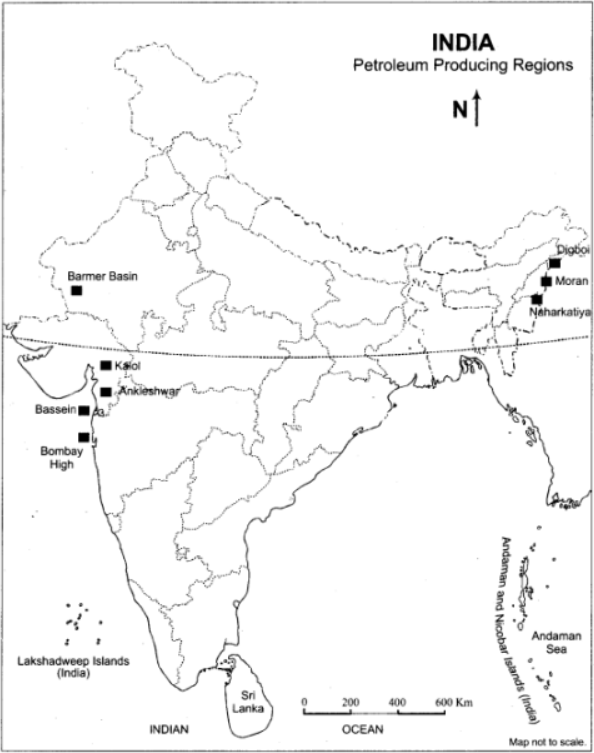-
04 Feb 2023
GS Paper 1
Geography
Day 76
Question 1: Examine the regions where hunting and gathering is the main mode of subsistence in the world. (250 Words)
Question 2: Discuss the factors that influence the location of the petroleum industries, in India and world. (250 Words)Answer 1
Approach
- Write an introduction about hunting and gathering.
- Mention the different places of the world where hunting and gathering are prevalent.
- Write a holistic and appropriate conclusion.
Introduction
- Hunting and gathering is still practiced in some parts of the world, although it has declined significantly over the last several thousand years.
- It is primarily found in remote, rural areas where people live in close proximity to natural resources and do not have access to modern technologies for food production.
Body
- Some examples of regions where hunting and gathering is still practiced include:
- The Arctic: Indigenous people in the Arctic, such as the Inuit, have traditionally relied on hunting and gathering for subsistence. They hunt marine mammals, fish, and gather wild plants for food.
- The African savanna: Some groups in Africa, such as the Hadza and San people, continue to practice hunting and gathering as their main mode of subsistence. They hunt wild game and gather wild fruits, nuts, and roots.
- The Amazon Basin: Indigenous communities in the Amazon Basin also rely on hunting and gathering, in addition to some forms of subsistence agriculture. They hunt game, fish, and gather wild foods, including roots, fruits, and nuts.
- The Kalahari Desert: The San people in the Kalahari Desert have traditionally relied on hunting and gathering for subsistence. They hunt wild game and gather wild fruits, nuts, and roots.
- The Andaman Islands: The Indigenous peoples of the Andaman Islands in the Bay of Bengal rely on hunting, fishing, and gathering for subsistence. They hunt wild game, fish in the sea, and gather wild foods such as fruits, nuts, and roots.
- The Papuan Peninsula Lands: Indigenous peoples in the Papuan Highlands of New Guinea rely on hunting, fishing, and gathering for subsistence. They hunt wild game, fish in rivers and lakes, and gather wild foods such as fruits, nuts, and roots.
- The Pacific Northwest: Indigenous peoples of the Pacific Northwest of North America, such as the Kwakwaka'wakw, Haida, and Tlingit, have traditionally relied on hunting, fishing, and gathering for subsistence. They hunt marine mammals, fish, and gather wild foods such as roots, fruits, and nuts.
Conclusion
Although this traditional way of life is facing numerous threats, including deforestation, resource exploitation, and forced resettlement, many Indigenous communities continue to practice hunting and gathering as a means of subsistence. It is important to recognize and respect the knowledge and cultural traditions of these communities and to ensure their continued survival and well-being.
Answer 2
Approach
- Write a brief introduction about petroleum industry and its location.
- Discuss the factors that influences the locations of the petroleum industries.
- Write a holistic and appropriate conclusion.
Introduction
- The petroleum industry plays a crucial role in meeting the energy demands of the world.
- The location of the petroleum industry is influenced by a range of factors that determine the suitability of a particular region for the establishment of this industry.
- In India, as well as globally, the presence of significant oil and natural gas reserves, geographical accessibility, political stability, skilled workforce, environmental regulations, and market demand are some of the key factors that influence the location of the petroleum industry.
Body
- There are several factors that influence the location of the petroleum industry in India, including:
- Availability of oil and natural gas reserves: The presence of significant oil and gas reserves is the most important factor in determining the location of the petroleum industry. The presence of such reserves in a particular area makes it a favorable location for exploration and production activities.
- Geographical accessibility: The ease of accessing oil and gas reserves is another important factor. Regions with good transportation and infrastructure facilities are preferred for petroleum exploration and production activities.
- Political stability: A stable political environment is crucial for the smooth functioning of the petroleum industry. Areas with a stable government and favorable policies for the oil and gas sector are preferred for the establishment of petroleum industries.
- Skilled workforce: The availability of a skilled workforce is important for the petroleum industry. Areas with a strong educational and training system are favored for the establishment of petroleum industries.
- Environmental regulations: The presence of strict environmental regulations can also affect the location of the petroleum industry. Regions with lenient environmental regulations are preferred by the petroleum industry, while regions with strict regulations may be less attractive.
- Market demand: The proximity to major markets is also a crucial factor in determining the location of the petroleum industry. Areas close to major consumption centers are preferred for the establishment of petroleum industries to minimize transportation costs and to meet the market demand for petroleum products.
Conclusion
The location of the petroleum industry in India is influenced by a combination of factors such as the availability of oil and natural gas reserves, geographical accessibility, political stability, skilled workforce, environmental regulations, and market demand. The interplay of these factors determines the suitability of a particular region for the establishment of the petroleum industry. The Indian government and relevant stakeholders need to carefully consider these factors to ensure that the petroleum industry is established in a manner that benefits the country and its people.






